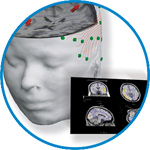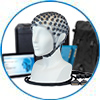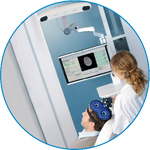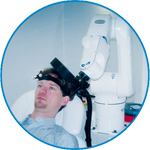- Home
- About ANT
-
Products

asa
asa is a highly flexible EEG/ERP and MEG analysis package with a variety of source reconstruction, signal analysis and MRI processing features.
.jpg)
eego mylab
The new frontier in multimodal brain research. With up to 16 kHz sampling rate, 256 EEG channels and unique software features, eego mylab gives you an unprecedented in-depth understanding of the human brain.

eego sports
eego sports offers complete freedom to collect high-density EEG data, bipolar EMG signals, and a variety of physiological sensor data, wherever and whenever required, with publish quality data in less than 15 minutes!

waveguard net
The waveguard net sets a new standard for research applications requiring high-density EEG data acquisition with quick preparation time, high flexibility, and subject comfort.

visor2
Our new and upgraded visor2 solutions integrate all the latest technologies for navigated rTMS, dual-coil navigation support, EEG-TMS recordings and pre-surgical evaluation for the highest quality in research and clinical procedures.

powerMAG ANT
The PowerMAG ANT 100 rTMS stimulator is designed for the specific needs of high-end TMS applications. Powerful high-frequency TMS as well as high precise single pulse and repetitive pulse protocols are combined in one single device.

xensor
xensor offers the solution for digitization of 3D electrode positions. xensor takes care of the whole procedure; it records, visualizes and stores positions acquired with a dedicated digitizer.

waveguard original
waveguard original is the cap solution for EEG measurements compatible with fMRI, MEG and TMS system. Use of active shielding guarantees performance in even the most demanding environments.

waveguard connect
waveguard connect EEG caps are a perfect match for hospitals and institutes aiming at reliable EEG, maximum uptime and great patient comfort! For optimal signal quality, the electrodes are made of pure, solid tin.

waveguard touch
waveguard touch is a dry electrode EEG cap. The unique Ag/AgCl coated soft polymer electrodes provide stable, research-grade EEG signals while maintaining subject comfort. The combination of these innovative dry electrodes and the industry-leading waveguard cap makes waveguard touch the best solution for dry EEG.

smartmove
smartmove allows planning of a complete TMS session ahead by defining stimulation sites based on anatomical MRI information and functional information like fMRI, PET or EEG/MEG.
Stay - References
- Support
- Events
- News
- Contact Us
You are here
Electrophysiological correlates of the composite face illusion: disentangling perceptual and decisional components of holistic face processing in the human brain
Electrophysiological correlates of the composite face illusion: disentangling perceptual and decisional components of holistic face processing in the human brain
When the bottom halves of two faces differ, people's behavioral judgment of the identical top halves of those faces is impaired: they report that the top halves are different, and/or take more time than usual to provide a response. This behavioral measure is known as the composite face effect (CFE) and has traditionally been taken as evidence that faces are perceived holistically. Recently, however, it has been claimed that this effect is driven almost entirely by decisional, rather than perceptual, factors (Richler, Gauthier, Wenger, & Palmeri, 2008). To disentangle the contribution of perceptual and decisional brain processes, we aimed to obtain an event-related potential (ERP) measure of the CFE at a stage of face encoding (Jacques & Rossion, 2009) in the absence of a behavioral CFE effect. Sixteen participants performed a go/no-go task in an oddball paradigm, lifting a finger of their right or left hand when the top half of a face changed identity. This change of identity of the top of the face was associated with an increased ERP signal on occipito-temporal electrode sites at the N170 face-sensitive component (∼160 ms), the later decisional P3b component, and the lateralized readiness potential (LRP) starting at ∼350 ms. The N170 effect was observed equally early when only the unattended bottom part of the face changed, indicating that an identity change was perceived across the whole face in this condition. Importantly, there was no behavioral response bias for the bottom change trials, and no evidence of decisional biases from electrophysiological data (no P3b and LRP deflection in no-go trials). These data show that an early CFE can be measured in ERPs in the absence of any decisional response bias, indicating that the CFE reflects primarily the visual perception of the whole face.

 Read more
Read more.jpg)




